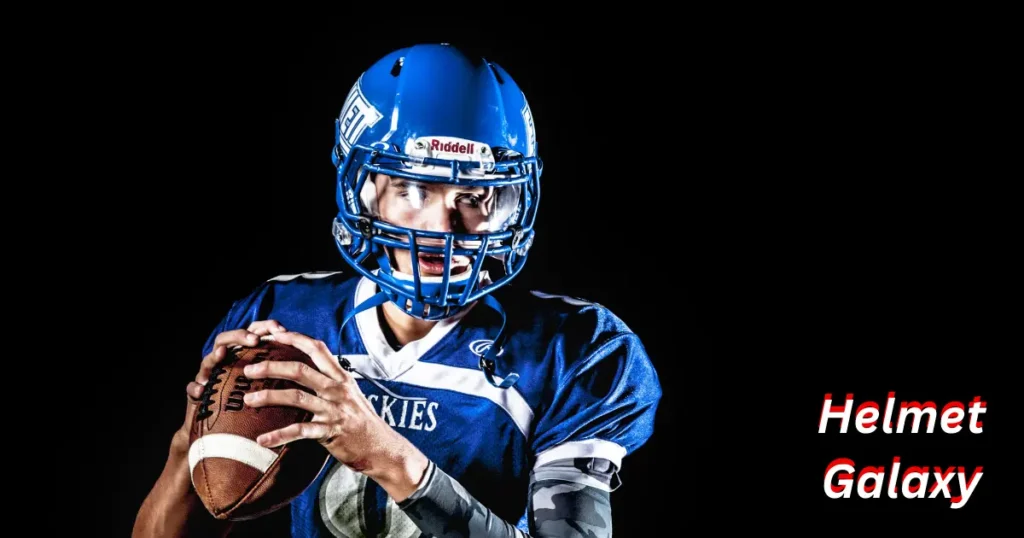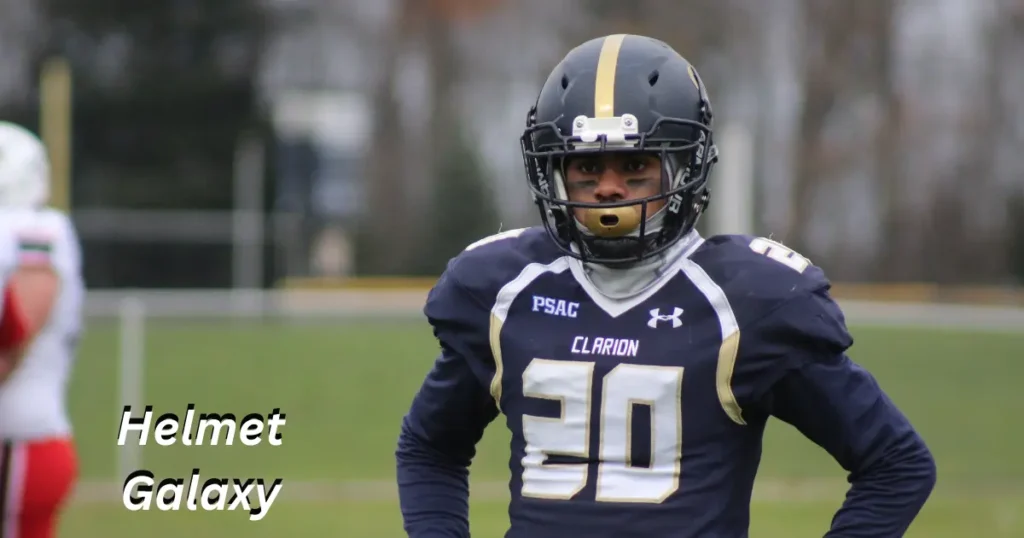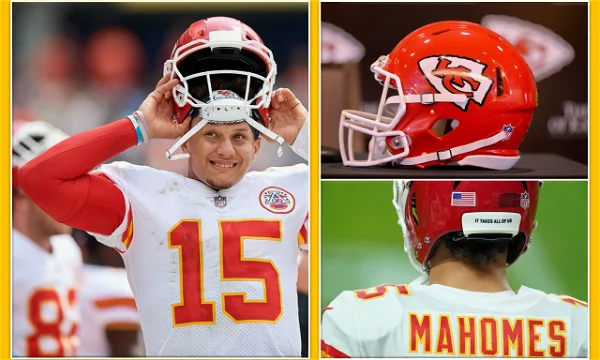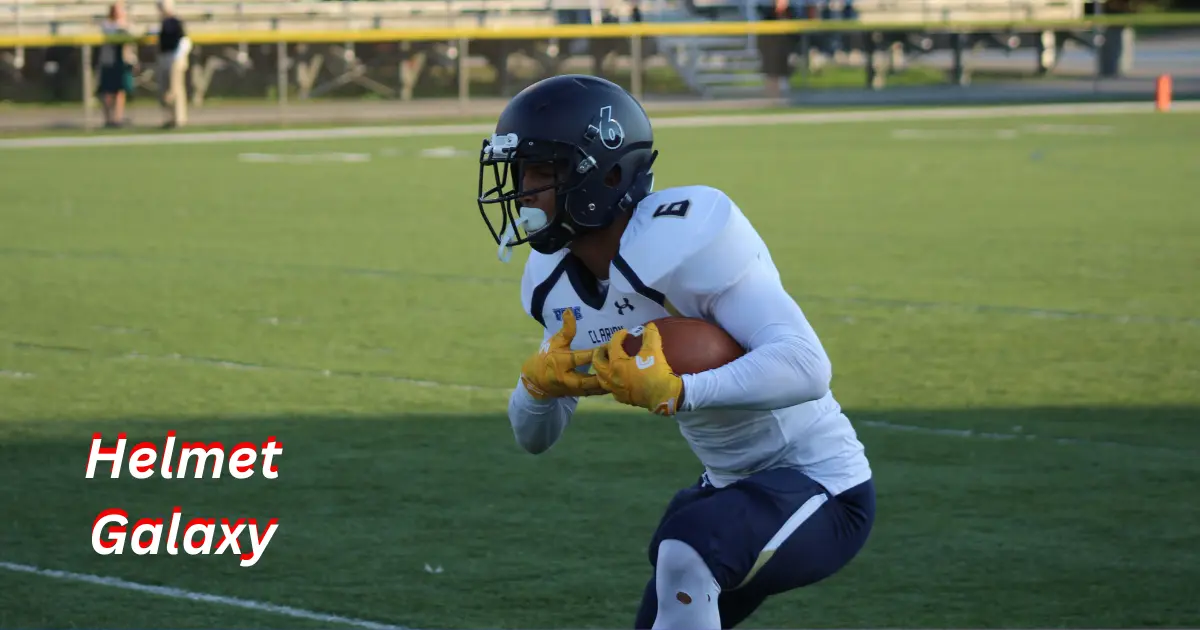Football is an exciting but dangerous sport that requires players to wear protective equipment like helmets. With many helmet options available, determining the best football helmet can be difficult.
This article will compare top football helmet models on the market and provide recommendations for selecting the safest helmet based on your needs.
How Do Football Helmets Protect Players?

Football helmets are designed to protect players from head injuries, especially concussions which can have long-term health effects. Helmets reduce the forces to the head caused by collisions with other players, the ground, and balls.
Key helmet protective features include:
- Outer shell – Made of polycarbonate/ABS plastic alloy, this hard layer absorbs and distributes impact forces.
- Inner lining – Padding made of vinyl nitrile foam conforms to the head and cushions impacts.
- Facemask – Metal alloy bars cover the face and deflect blows away from nose, teeth, jaw and eyes.
- Chin strap – Nylon straps keep the helmet securely on the head.
- Air bladders – Inflatable pockets provide customized fit and added shock absorption.
Advanced helmets also have add-ons like supreme inner linings and side plates for increased protection.
Top 5 Football Helmets for Safety

Football helmet technology, testing procedures, and safety regulations have advanced considerably over the years. Here are 5 top-rated helmet models for optimal protection:
1. Riddell SpeedFlex
- Outer Shell: Polycarbonate alloy shell flexes upon impact to disperse force
- Inner Lining:multipart padding minimizes head movement inside helmet
- Other Features: Flex System for customized fit, Ratchet-Loc retention system
- Protection: 5-star Virginia Tech helmet rating; high concussion-reduction capability
2. Schutt F7 LTD
- Outer Shell: TPU material allows shell flexing and absorption of hit force
- Inner Lining: Vinyl nitrile foam; extreme comfort inner padding system
- Other Features: Advanced fit system; chin strap with interchangeable parts
- Protection: 5-star Virginia Tech rating; high-performing especially for back of head hits
3. Xenith Shadow XR
- Outer Shell: Polycarbonate alloy adaptive shell design
- Inner Lining: Vinyl nitrile foam; additional shock absorbers
- Other Features: Ratchet-fit system; extra neck roll protection
- Protection: 5-star Virginia Tech rating; excellent multi-hit protection
4. Vicis Zero1
- Outer Shell: Flexible matrix shell deforms on impact for force reduction
- Inner Lining: Layered columns compress and rebound to absorb energy
- Other Features: Custom-molded fit; tool-free size re-adjustment
- Protection: 5-star Virginia Tech rating; premier protection from multiple impact locations
5. Riddell Speed
- Outer Shell: Polycarbonate shell reinforced at key impact points
- Inner Lining: Vinyl nitrile foam, customizable for fit and comfort
- Other Features: Quick-release facemask; inflatable liner tuning
- Protection: 4-star Virginia Tech rating; trusted brand with advanced technology
Football Helmet Safety Features and Technologies to Look For

The latest football helmets incorporate innovative materials and design features for preventing head and brain injuries. Here are key factors to consider when selecting a helmet:
Impact-Absorbing Shell Technology
- Polycarbonate alloy shells that flex and deform on impact to dissipate force
- Shells with “bumper” layers that compress to absorb energy
- Adaptive shell designs that optimize force reduction at all impact locations
Advanced Inner Padding Systems
- Multi-layer, multi-density foams that cushion hits
- Vinyl nitrile padding covering expanded foam for comfortable protection
- Removable/adjustable liners and inflatable air bladders for customized fit
Secure Retention Systems
- Ratchet or dial adjustable chin straps for customized secure fit
- Quick-release chin strap clips for emergency helmet removal
- Occipital lock systems that cradle lower head
Additional Safety Components
- Facemasks made of durable alloys that resist bending and penetration
- Movable and removable facemask attachments to reduce twisting injuries
- Soft chin straps that adapt to all face shapes and sizes
- Helmet sensors that detect high impacts and alert coaches/staff
Football Helmet Sizing and Fit
Getting a properly fitted helmet is crucial for both safety and performance. Follow these tips for finding your optimal helmet size and fit:
- Measure your head circumference with a cloth tape 1 inch above your eyebrows and match it to the helmet’s size range.
- Try on different sized helmets from various brands which fit differently.
- The helmet should feel snug when you first put it on. Foam padding will conform to your head shape.
- With the chinstrap fastened, check that the helmet doesn’t wobble and you can open your mouth wide.
- Position the frontal pad 2 finger widths above the eyebrow; make sure you can see periphery when looking up.
- Avoid sizes too tight or loose which compromise protection and comfort.
- Break in the helmet before the season with practices to ensure the customized fit.
A certified athletic trainer can assist with fitting to find the best helmet for your head size and shape.
Helmet Care and Maintenance

Proper football helmet maintenance ensures safety, extends equipment lifespan, and protects your investment. Follow these key care tips:
- Inspect regularly for cracks or damage and replace if needed. Most helmets should be replaced every 4-6 years.
- Clean inside padding and exterior regularly with mild detergent; never bleach or paint.
- Avoid storing in extreme temps; don’t place heavy objects on helmet.
- Follow manufacturer guidelines for removing and replacing facemasks.
- Recondition helmet and parts annually before season; check with school policy.
- Alert coaches of any fit issues; never alter parts yourself.
- Monitor chinstrap condition and replace if fraying; ensure clip and screws work.
- Don’t let others borrow your helmet which can affect fit and condition.
Seeking guidance from equipment managers, athletic trainers, and manufacturers can help optimize helmet maintenance.
Conclusion
Selecting the best football helmet is serious business. The helmet model, proper fit, and additional features all significantly impact player safety on the field. By comparing helmet technologies and ratings, measuring head size, understanding sizing options, and following fitting guidelines, players can find the right helmet to meet their protection needs and budget.
From flexible polycarbonate shells to advanced inner padding systems, today’s helmets offer excellent defense against traumatic head and brain injuries for this hard-hitting sport. But no helmet can eliminate concussion risks entirely. Focusing on safer playing techniques provides the best protection for a long, healthy football career.
Most Frequently Asked Questions About Football Helmets
What is the average cost of a football helmet?
The average cost of a new football helmet ranges from $150 to $500 based on the brand and model. High school players typically use mid-range helmets costing about $200 – $300, while professional and collegiate players use top-end helmets costing over $400. Reconditioning a used helmet costs $30-$75 per year.
How heavy are football helmets?
The weight of football helmets can range from 1.8 lbs for small sizes up to 3.0 lbs for larger helmets. Newer polycarbonate alloy shells are lighter while offering equal or better protection than older models. A properly fitted helmet should not cause significant neck strain.
Do football helmets expire?
Most football helmet manufacturers recommend replacing helmets every 4 to 6 years due to wear, tear and helmet technology improvements. School athletic programs often replace about 20% of helmets annually once they are reconditioned no longer. Helmets with cracked shells or deteriorating interior foam must be immediately replaced no matter the age.
Can football helmets prevent concussions?
No helmet can fully prevent concussions which are brain injuries caused by sudden head acceleration and deceleration. But modern football helmets are highly effective at reducing the forces transmitted to the head thereby significantly decreasing concussion rates compared to past decades. Proper helmet fit and wearing technique further improves protection.
Should football helmets be custom fit?
Yes, custom fitting is ideal especially for youth to maximize protection and minimize head movement within the helmet. Customized helmets have inflatable liners pumped to match the exact contours of a player’s head. For a close fit, make sure to select the right size, finetune adjustments, and properly break-in the helmet.
Are used helmets safe?
Used helmets can provide adequate protection if properly maintained and reconditioned annually. However, used helmets should be thoroughly inspected for any cracks, loose parts or deterioration which can compromise safety. Only use gently used helmets less than 4-6 years old from reputable sources. Fitting and comfort may be compromised with a used helmet.
How do air pumps work in football helmets?
Many helmets now feature inflatable air bladders or liners that allow custom inflation for a precision fit. Using the included hand pump, air can be added or released through valves to adjust thickness in different zones until the helmet fits the head snugly. Air pumps help absorb force and reduce internal helmet movement.
Should youth football players use specialty helmets?
Younger athletes’ heads are still growing and their neck muscles are weaker, so youth-specific helmets are recommended for best protection. Youth helmets feature thicker padding, smaller sizes, and reduced weight. Some brands offer removable plugs to extend the helmet’s life as the child’s head grows.
How can I tell if a helmet is properly fitted?
When fitted properly, a football helmet should feel snug without pinching. The skin of the brow and cheeks should move with the helmet. No gaps should be felt inside when moving the head around. The helmet should not rock back and forth or side-to-side on the head when the chin strap is fastened.
How do smart helmet sensors work?
Some newer helmets contain sensors that detect high impacts and alert coaches when a certain g-force threshold is exceeded. The helmet sensors wirelessly communicate with monitoring devices to identify dangerous collisions immediately so players can be checked for concussion symptoms. This allows for early injury intervention.
